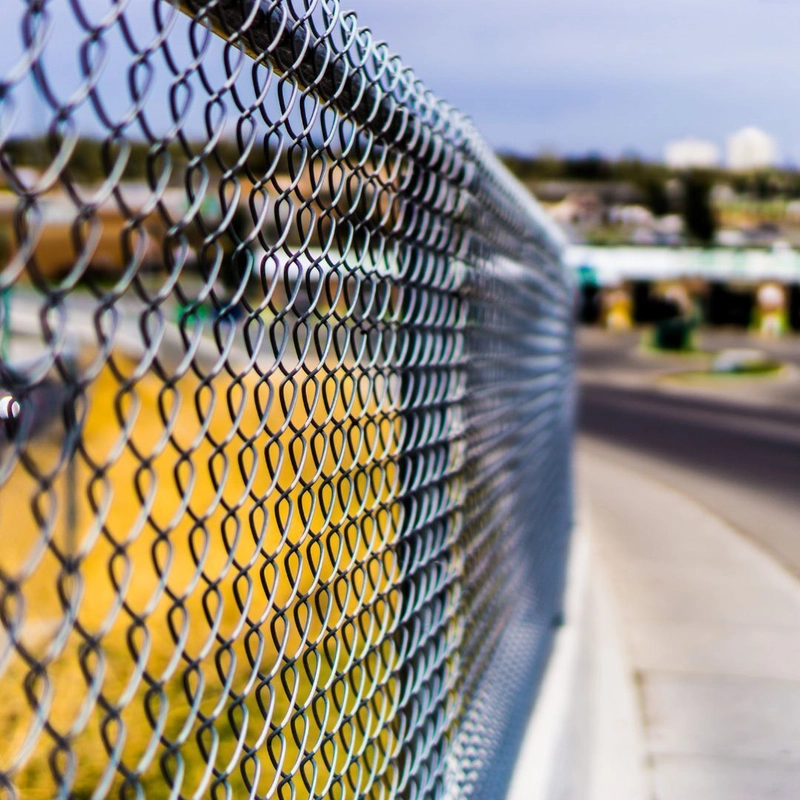Are Chain Link Fences Resistant to Strong Winds and Storms?
When installing a fence, one crucial factor to consider is its ability to withstand harsh weather conditions, particularly strong winds and storms. Many homeowners and businesses rely on chain link fences due to their durability and cost-effectiveness. However, are they truly resistant to severe weather? This guide explores their resilience and compares them to other fencing options. Step 1: Understanding Wind Load on Fences Wind load refers to the force exerted by wind on a structure. Chain link fences, due to their open design, allow air to pass through more efficiently than solid fences, reducing wind resistance. However, factors like material strength, post depth, and installation quality also play a role in their durability. Here’s a Python script to estimate wind load on a fence based on wind speed: # Wind Load Calculation def calculate_wind_load(wind_speed, area, drag_coefficient=1.2): air_density = 1.225 # kg/m³ (standard air density) wind_load = 0.5 * air_density * wind_speed**2 * drag_coefficient * area return wind_load # Example usage wind_speed = 80 # in km/h fence_area = 10 # in square meters load = calculate_wind_load(wind_speed, fence_area) print(f"Estimated wind load: {load} N") Step 2: Comparing Fence Types for Storm Resistance Chain Link Fences Pros: Wind passes through easily, reducing resistance. Cons: May need reinforcement in extreme storms. For professional installation and reinforcement, contact a chain link fence company Schaumburg for expert guidance. Wood Fences Pros: Aesthetic appeal and privacy. Cons: Acts as a solid barrier, increasing wind resistance and potential damage. For high-quality wooden fencing, check out wood fence Schaumburg IL to find the best options. Iron Fences Pros: Strong and durable, with gaps allowing some wind to pass through. Cons: Heavy and requires strong posts to withstand high winds. For elegant and durable solutions, explore iron fence Schaumburg IL for premium iron fencing. Step 3: Reinforcing a Chain Link Fence Against Storms Use Stronger Posts: Opt for thicker metal posts buried at least 3 feet deep. Add Tension Wires: Reinforce the top and bottom of the fence to reduce movement. Install Wind Screens: While they add resistance, they help with debris control. Anchor Properly: Secure posts with concrete to prevent tipping. Here’s a JavaScript function to visualize wind direction and fence resistance: function calculateFenceResistance(windSpeed, fenceType) { let resistance; switch (fenceType) { case "chain_link": resistance = windSpeed * 0.5; // Allows more wind passage break; case "wood": resistance = windSpeed * 1.5; // Solid barrier, higher resistance break; case "iron": resistance = windSpeed * 1.2; // Moderate wind resistance break; default: resistance = windSpeed; } return `Estimated resistance for ${fenceType}: ${resistance} units`; } console.log(calculateFenceResistance(80, "chain_link")); Conclusion Chain link fences offer a strong defense against strong winds and storms due to their open design, which allows air to pass through. However, additional reinforcements such as tension wires and deeper posts can significantly enhance their durability. If you live in an area prone to extreme weather, considering alternative options like iron fences or reinforced wood fences may also be beneficial. Always consult fencing professionals to ensure proper installation and compliance with local weather conditions. Secure your property with the right fence and stay protected from nature’s elements!

When installing a fence, one crucial factor to consider is its ability to withstand harsh weather conditions, particularly strong winds and storms. Many homeowners and businesses rely on chain link fences due to their durability and cost-effectiveness. However, are they truly resistant to severe weather? This guide explores their resilience and compares them to other fencing options.
Step 1: Understanding Wind Load on Fences
Wind load refers to the force exerted by wind on a structure. Chain link fences, due to their open design, allow air to pass through more efficiently than solid fences, reducing wind resistance. However, factors like material strength, post depth, and installation quality also play a role in their durability.
Here’s a Python script to estimate wind load on a fence based on wind speed:
# Wind Load Calculation
def calculate_wind_load(wind_speed, area, drag_coefficient=1.2):
air_density = 1.225 # kg/m³ (standard air density)
wind_load = 0.5 * air_density * wind_speed**2 * drag_coefficient * area
return wind_load
# Example usage
wind_speed = 80 # in km/h
fence_area = 10 # in square meters
load = calculate_wind_load(wind_speed, fence_area)
print(f"Estimated wind load: {load} N")
Step 2: Comparing Fence Types for Storm Resistance
Chain Link Fences
- Pros: Wind passes through easily, reducing resistance.
- Cons: May need reinforcement in extreme storms.
For professional installation and reinforcement, contact a chain link fence company Schaumburg for expert guidance.
Wood Fences
- Pros: Aesthetic appeal and privacy.
- Cons: Acts as a solid barrier, increasing wind resistance and potential damage.
For high-quality wooden fencing, check out wood fence Schaumburg IL to find the best options.
Iron Fences
- Pros: Strong and durable, with gaps allowing some wind to pass through.
- Cons: Heavy and requires strong posts to withstand high winds.
For elegant and durable solutions, explore iron fence Schaumburg IL for premium iron fencing.
Step 3: Reinforcing a Chain Link Fence Against Storms
- Use Stronger Posts: Opt for thicker metal posts buried at least 3 feet deep.
- Add Tension Wires: Reinforce the top and bottom of the fence to reduce movement.
- Install Wind Screens: While they add resistance, they help with debris control.
- Anchor Properly: Secure posts with concrete to prevent tipping.
Here’s a JavaScript function to visualize wind direction and fence resistance:
function calculateFenceResistance(windSpeed, fenceType) {
let resistance;
switch (fenceType) {
case "chain_link":
resistance = windSpeed * 0.5; // Allows more wind passage
break;
case "wood":
resistance = windSpeed * 1.5; // Solid barrier, higher resistance
break;
case "iron":
resistance = windSpeed * 1.2; // Moderate wind resistance
break;
default:
resistance = windSpeed;
}
return `Estimated resistance for ${fenceType}: ${resistance} units`;
}
console.log(calculateFenceResistance(80, "chain_link"));
Conclusion
Chain link fences offer a strong defense against strong winds and storms due to their open design, which allows air to pass through. However, additional reinforcements such as tension wires and deeper posts can significantly enhance their durability. If you live in an area prone to extreme weather, considering alternative options like iron fences or reinforced wood fences may also be beneficial.
Always consult fencing professionals to ensure proper installation and compliance with local weather conditions. Secure your property with the right fence and stay protected from nature’s elements!










































































































































































![[The AI Show Episode 142]: ChatGPT’s New Image Generator, Studio Ghibli Craze and Backlash, Gemini 2.5, OpenAI Academy, 4o Updates, Vibe Marketing & xAI Acquires X](https://www.marketingaiinstitute.com/hubfs/ep%20142%20cover.png)



























































































































![[FREE EBOOKS] The Kubernetes Bible, The Ultimate Linux Shell Scripting Guide & Four More Best Selling Titles](https://www.javacodegeeks.com/wp-content/uploads/2012/12/jcg-logo.jpg)



![From drop-out to software architect with Jason Lengstorf [Podcast #167]](https://cdn.hashnode.com/res/hashnode/image/upload/v1743796461357/f3d19cd7-e6f5-4d7c-8bfc-eb974bc8da68.png?#)






































































































.png?#)




.jpg?#)
































_Christophe_Coat_Alamy.jpg?#)







































































































![Rapidus in Talks With Apple as It Accelerates Toward 2nm Chip Production [Report]](https://www.iclarified.com/images/news/96937/96937/96937-640.jpg)









































































































































